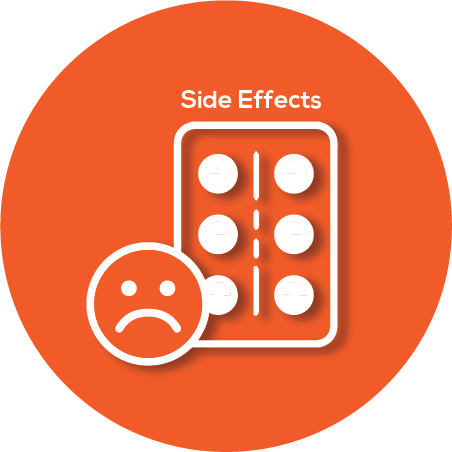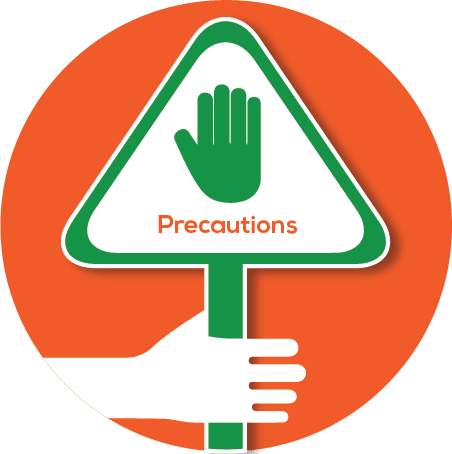prostagard SILODOSIN
Introduction to Prostagard
Prostagard is a medication primarily used to manage symptoms associated with an enlarged prostate, a condition known as benign prostatic hyperplasia (BPH). This condition can cause difficulties in urination and frequent urges to urinate. Prostagard helps alleviate these symptoms, improving the quality of life for those affected.
Composition of Prostagard
Prostagard contains the active ingredient Silodosin, which is an alpha-blocker. Alpha-blockers work by relaxing the muscles in the prostate and bladder, making it easier to urinate.
Uses of Prostagard
- Relieves symptoms of benign prostatic hyperplasia (BPH)
- Improves urine flow
- Reduces the frequency of urination
Side Effects of Prostagard
Common Side Effects:
- Dizziness
- Ejaculation disorders
- Headache
Serious Side Effects:
- Low blood pressure
- Fainting
- Severe allergic reactions
Precautions of Prostagard
Before taking Prostagard, inform your doctor if you have a history of low blood pressure or any liver or kidney issues. It is not recommended for those with severe liver or kidney impairment. Additionally, avoid using Prostagard if you are taking strong CYP3A4 inhibitors, as these can interact with the medication.
How to Take Prostagard
- Take Prostagard as prescribed by your doctor.
- The usual adult dosage is 8 mg once daily.
- Take the medication with food to enhance absorption.
- Swallow the capsule whole; do not crush or chew it.
Conclusion of Prostagard
Prostagard is an effective medication for managing symptoms of BPH, helping to improve urine flow and reduce urinary frequency. However, it is important to follow your doctor's instructions and be aware of potential side effects and precautions. Always consult with your healthcare provider for personalized advice and treatment.


Can I take Prostagard with other prescription drugs?
Prostagard can interact with other medications, increasing the risk of side effects. For example, it can interact with blood pressure medications, leading to low blood pressure. It may also interact with certain antifungal or antibiotic drugs. Always inform your doctor about all medications you're taking to avoid interactions.

Can Prostagard be taken safely while breastfeeding?
Prostagard is not recommended while breastfeeding. There's limited information on whether it passes into breast milk or its effects on a breastfed infant. If you're breastfeeding, consult your doctor for safer medication options that allow you to nurse your baby safely.

Can Prostagard be taken safely while pregnant?
Prostagard is not recommended during pregnancy. There is limited evidence on its safety for pregnant women, and it's not typically prescribed for conditions affecting them. If you're pregnant or planning to become pregnant, consult your doctor for safer alternatives to manage your health condition.

Does Prostagard affect appetite?
Prostagard doesn't typically affect appetite. Most people take it without noticing changes in hunger or eating habits. If you experience unexpected appetite changes, consult your doctor to determine if they are related to Prostagard or another cause.

Does Prostagard affect mood?
Prostagard doesn't typically cause mood changes. Most people take it without experiencing anxiety or agitation. If you notice mood changes after starting Prostagard, consult your doctor. These symptoms might be related to another cause, and your doctor can help determine the best course of action.

Does Prostagard affect sleep?
Prostagard doesn't typically cause sleep problems. Most people take it without experiencing changes in sleep patterns. If you notice sleep disturbances, consult your doctor. These might be related to another cause, and your doctor can help determine the best way to improve your rest.

Does Prostagard cause headaches?
Yes, Prostagard can cause headaches, but this is not common. If you experience mild headaches, staying hydrated and resting may help. Over-the-counter pain relievers can be used after consulting your doctor. If headaches persist or are severe, contact your healthcare provider to determine if they are related to Prostagard or another cause.

Does Prostagard cause stomach upset?
Yes, Prostagard can cause stomach upset, including nausea and diarrhea, but these are not common. If you experience mild stomach upset, taking the medication with food may help. If symptoms persist or worsen, consult your doctor to determine if they are related to Prostagard or another cause.

Does Prostagard cause weight gain?
Prostagard doesn't typically affect weight. Most people take it without noticing changes in body weight. If you experience unexpected weight changes, consult your doctor to determine if they are related to Prostagard or another cause.

Does Prostagard have adverse effects?
Adverse effects are unwanted reactions to a medication. Common adverse effects of Prostagard include dizziness and nasal congestion. These occur in less than 10% of users. Serious side effects like severe allergic reactions are rare but require immediate medical attention. If you notice any new or worsening symptoms, contact your doctor.

Does Prostagard have any safety warnings?
Yes, Prostagard has safety warnings. It can cause low blood pressure, especially when standing up, leading to dizziness or fainting. Not adhering to these warnings can result in falls or injuries. Drink plenty of fluids and rise slowly from sitting or lying positions. If you experience severe dizziness or fainting, seek medical help immediately.

Does Prostagard interfere with sexual function?
Yes, Prostagard can interfere with sexual function. It may cause sexual health side effects like reduced libido or erectile dysfunction. These side effects are considered occasional, affecting less than 10% of users. The severity is usually mild to moderate. If you experience these side effects, talk to your doctor. They might suggest adjusting your dose or trying a different medication. Maintaining open communication with your healthcare provider can help manage these issues effectively.

Does Prostagard limit driving?
Prostagard can cause dizziness or light-headedness, which may impair driving. Avoid driving until you know how the medication affects you. If you feel dizzy or faint, do not drive. Consult your doctor if you have concerns about driving while taking Prostagard.

Does Prostagard make it hard to think or concentrate?
Prostagard doesn't typically cause cognitive issues like difficulty concentrating or thinking. Most people take it without experiencing changes in mental focus. If you notice cognitive problems, consult your doctor to determine if they are related to Prostagard or another cause.

Does Prostagard make people tired or drowsy?
Prostagard can cause tiredness or drowsiness, but this is not common. If you feel unusually tired, consult your doctor. Your tiredness might be due to another cause, and your doctor can help determine the best course of action. Proper rest and a balanced diet can help maintain energy levels.

For how long do I take Prostagard?
Prostagard is usually taken long-term for managing benign prostatic hyperplasia, which is an enlarged prostate. You'll typically take it daily unless your doctor advises otherwise. The duration depends on your response and any side effects. Always consult your doctor before changing or stopping your treatment.

How does Prostagard work?
Prostagard is an alpha-blocker that works by relaxing muscles in the prostate and bladder. This relaxation improves urine flow and reduces symptoms of benign prostatic hyperplasia, which is an enlarged prostate. Think of it like opening a valve to allow smoother flow, easing urinary difficulties.

How do I dispose of Prostagard?
Dispose of Prostagard by taking it to a drug take-back program or collection site at a pharmacy or hospital. If unavailable, mix it with undesirable substances like used coffee grounds, seal in a plastic bag, and throw it in the trash. This prevents harm to people and the environment.

How do I know if Prostagard is working?
Prostagard is used to treat benign prostatic hyperplasia, which is an enlarged prostate. You'll know it's working if you notice improved urine flow and reduced urinary symptoms like frequent urination. Regular check-ups with your doctor can help monitor its effectiveness and adjust treatment if needed.

How do I take Prostagard?
Take Prostagard once daily with a meal, usually in the morning or evening. Swallow the capsule whole; do not crush or chew it. If you miss a dose, take it as soon as you remember, unless it's close to your next dose. In that case, skip the missed dose. Do not double up on doses. Avoid alcohol, as it can increase side effects like dizziness. Always follow your doctor's specific instructions for taking Prostagard.

How long does it take for Prostagard to start working?
Prostagard starts working within a few hours, but full effects may take a few days to appear. Individual factors like age and kidney function can affect how quickly it works. Take it as prescribed for the best results, and consult your doctor if you have concerns about its effectiveness.

How should I store Prostagard?
Store Prostagard at room temperature, away from moisture and light. Keep it in a tightly closed container. Do not store it in humid places like bathrooms. Always keep it out of reach of children. Check the expiration date regularly and dispose of any unused or expired medication properly.

Is it safe to drink alcohol while taking Prostagard?
It's best to avoid alcohol while taking Prostagard. Alcohol can increase the risk of side effects like dizziness and low blood pressure. If you choose to drink, limit your intake and watch for symptoms like dizziness or fainting. Consult your doctor for personalized advice on alcohol use.

Is it safe to drink coffee or tea while taking Prostagard?
You can drink coffee and tea while taking Prostagard. There's no known interaction between caffeine and Prostagard. However, caffeine can increase urination, so drink caffeinated beverages in moderation and stay hydrated. If you experience dizziness or lightheadedness, consult your doctor.

Is it safe to exercise while taking Prostagard?
Yes, you can exercise while taking Prostagard, but be cautious. It can cause dizziness or low blood pressure, especially during physical activity. Stay hydrated and avoid strenuous activities if you feel dizzy. If symptoms persist, consult your doctor for advice on safe exercise routines.

Is it safe to stop Prostagard?
Yes, you can stop Prostagard, but consult your doctor first. It's used for long-term management of conditions like benign prostatic hyperplasia, which is an enlarged prostate. Stopping suddenly may cause symptoms to return. Your doctor can guide you on how to stop safely, possibly by gradually reducing the dose.

Is Prostagard addictive?
No, Prostagard is not addictive. It does not have habit-forming potential and does not cause dependency or withdrawal symptoms. It works by relaxing muscles in the prostate and bladder, which doesn't affect brain chemistry related to addiction. You can stop taking it without experiencing cravings or withdrawal.

Is Prostagard effective?
Yes, Prostagard is effective for treating benign prostatic hyperplasia, which is an enlarged prostate. It works by relaxing muscles in the prostate and bladder, improving urine flow and reducing symptoms. Clinical studies support its effectiveness in relieving urinary symptoms associated with this condition.

Is Prostagard safe for the elderly?
Yes, Prostagard is generally safe for the elderly, but they may be more vulnerable to side effects like dizziness and low blood pressure. These can increase the risk of falls. Regular monitoring and dose adjustments by a doctor can help manage these risks effectively.

What are Prostagard possible harms and risks?
Common side effects of Prostagard include retrograde ejaculation (28.1%), dizziness (3.2%), diarrhea (2.6%), and headache (2.4%). A serious adverse effect is a painful erection lasting several hours, which requires immediate medical attention.

What are the most common side effects of Prostagard?
Side effects are unwanted reactions to a medication. Common side effects of Prostagard include dizziness, nasal congestion, and diarrhea. These occur in less than 10% of users. If you experience new symptoms after starting Prostagard, they might be temporary or unrelated. Consult your doctor before stopping the medication.

What disease or symptom is Prostagard used for?
Prostagard is used to treat benign prostatic hyperplasia, which is an enlarged prostate. It helps improve urine flow and reduce symptoms like frequent urination. It's typically used alone but can be part of a broader treatment plan. Consult your doctor for personalized advice on managing your condition.

What is Prostagard?
Prostagard is a medication used to treat benign prostatic hyperplasia, which is an enlarged prostate. It belongs to a class of drugs called alpha-blockers, which work by relaxing muscles in the prostate and bladder. This helps improve urine flow and reduce symptoms like frequent urination.

What is the usual dose of Prostagard?
The usual starting dose of Prostagard for adults is 8 mg once daily with a meal. There are no specific dose adjustments for children, as it's not typically prescribed for them. Elderly patients may require careful monitoring. Always follow your doctor's dosing instructions, as they may adjust your dose based on your response and any side effects.

Who should avoid taking Prostagard?
Do not take Prostagard if you have severe liver or kidney problems, as it can worsen these conditions. It's also contraindicated if you're allergic to it or its ingredients. Use caution if you have low blood pressure, as Prostagard can lower it further. Always consult your doctor about these concerns.
Available in 2 variations

strip of 10 capsules

strip of 10 capsules












.svg)
